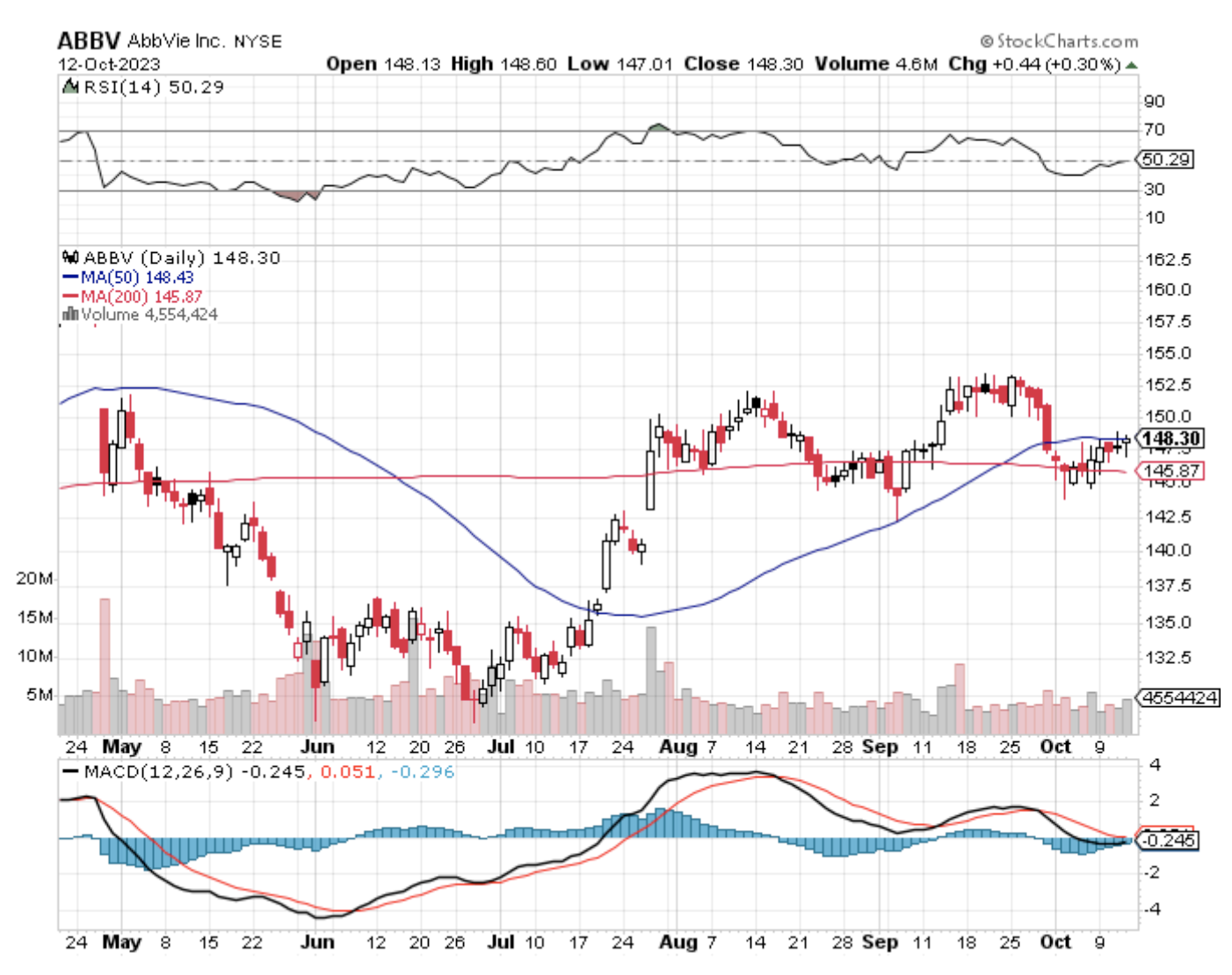In the current investment landscape, with the nearly 5% annualized yield from the 10-year U.S. Treasury bond casting a formidable shadow, making a case for investing in stocks might seem like an uphill battle. Especially so when one considers the sluggish performance of several stocks over the past two years, excluding those in niches like artificial intelligence and weight loss.
Yet, history teaches us a vital lesson: high-quality dividend stocks, especially in the biotech sector, tend to outpace most other asset classes in the long run. While the broader market has seen fluctuations and shifts towards safer options like CDs, dividend magnates in the biotech space, like AbbVie (ABBV), command attention for value and income investors.
Ever since its spin-off from Abbott Laboratories in 2013, AbbVie has carved a niche for itself. The sheer numbers are a testament to this: an eye-catching 270% growth in its dividend payouts over the last decade.
This performance positions it with a current yield of 3.99%, making it one of the most attractive propositions within the biopharma dividend landscape.
Further sweetening the pot is its moderate cash payout ratio of 42%, indicating a strong potential for more generous dividend increases in the foreseeable future.
Still, as with any investment, it's paramount to factor in the challenges ahead. AbbVie's journey with Humira, the anti-inflammatory drug, serves as a case in point.
Commanding a price tag of $50,000 annually, Humira wasn't just another drug in the market; it was a pharmaceutical marvel that earned the accolade of being the highest-grossing drug in history. But the winds of change are inevitable.
AbbVie's U.S. patent protection for Humira has expired, signaling an era where the company has to look beyond this blockbuster drug for its revenue streams.
The spotlight now is on Skyrizi and Rinvoq, AbbVie's next-gen immunology therapies. These drugs have shown commendable performance since their introduction to the market. However, the looming question is whether they can step into Humira's colossal shoes.
While some analysts remain skeptical about Skyrizi and Rinvoq matching up to Humira's performance benchmarks before 2030, AbbVie's internal projections are more bullish, eyeing a turnaround by 2025.
But amidst these contrasting forecasts, there's a silver lining that both skeptics and optimists agree upon: buoyed by its robust cash flows, AbbVie is expected to sustain, if not enhance, its dividends for at least the next decade.
Pivoting slightly and shining a light on its innovative pursuits, AbbVie unveiled promising results for Rinvoq in a mid-stage trial for vitiligo treatment.
For the uninitiated, vitiligo is a condition where individuals experience a loss of skin pigment, affecting varied parts of the body. The potential market for vitiligo treatments is substantial, with current valuations at $410.5 million, projected to burgeon to $625.8 million by 2031.
The increasing number of vitiligo cases globally plays a significant role in this growth trajectory. To put things in perspective, the Global Vitiligo Foundation in 2021 estimated that nearly 70 million people worldwide are affected by this condition, with a sizable fraction being children.
Navigating this emerging and competitive landscape is no small feat. Powerhouses like Astellas Pharma (ALPMY), Pfizer (PFE), and Baxter (BAX) are just a few of the giants that dot this arena. Every move by AbbVie, especially its endeavors with Rinvoq, is more than just corporate strategy; it's a tango in a fiercely competitive ballroom.
Now, coming full circle to the heart of the matter: What does this all mean for an investor with a keen eye on biotech dividends? AbbVie's journey is both a testament to its past prowess and an indicative nod to its future trajectory. While Humira's glory days might be seeing a horizon, the dawn of Skyrizi and Rinvoq offers a fresh chapter filled with both risks and rewards.
For those already holding AbbVie stocks, the prudent strategy might be a blend of patience and perseverance, enjoying the dividends while staying attuned to the market's pulse. Investments, after all, are as much about the art of patience as they are about the science of numbers. Today's challenges could well be the stepping stones to tomorrow's successes. I suggest you wait for a better entry point and buy the dip.

